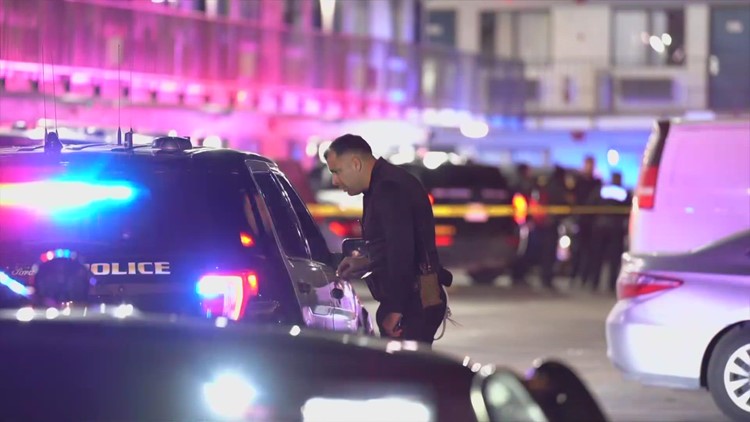To curb violent crime, San Antonio police are trying something new

The San Antonio Police Department is using a new violent crime strategy. The first part of the plan simply requires the officers to sit in their cars.
SAN ANTONIO. The San Antonio police are using a new strategy to reduce homicides, robberies and assaults.
A comprehensive method developed by UTSA criminology professor Michael Smith reduced violent crime in some Dallas neighborhoods by 11 percent in one year.
The improvement means there are 1,000 fewer victims of violent crime, Smith said.
“As much as we’d like to think we’re a data-driven organization, it’s a fresh start for us and the police department in that era – more than we’ve ever done before,” city manager Eric Walsh told the council Wednesday. .
The San Antonio Police will implement the plan in stages. The first stage is already underway.
Using data from crime reports, police and UTSA researchers identified 28 areas where people are most likely to commit violent crime. These “hot spots” are about the size of one city block.
“(Officers) go to the hot spot. They turn on the lights overhead. They sit there for the required time and then return to their duties,” said San Antonio Police Chief William McManus.
The police will not leave their cruisers unless they witness an emergency or a violent crime. Officers will remain in the hotspot for at least 15 minutes before moving on.
The idea, according to Smith, is to increase visibility too much.
“The simple theory is that most people who want to commit a violent crime are not going to commit it in front of a police officer,” he added.
The department will use crime data to decide when and where officers should go, and how long they should stay in a hotspot. Every 60 days SAPD will evaluate the data and reassign hotspots.
Police have not publicly disclosed where the hotspots are.
Smith likens this first phase of the strategy to a tourniquet.
“The goal is to help move the needle pretty quickly into some of those brutal places,” Smith said. “It helps buy time to implement other strategies.”
According to Smith, there is no evidence that violent criminals in hot spots will simply misbehave elsewhere as long as the police are in their area.
McManus told the council Wednesday that San Antonio’s violent crime prevention strategy will not be like SCORPION’s Memphis unit, which also targets hotspots.
Members of the squad are accused of killing Tyre Nichols.
“It doesn’t reflect that in any way, shape or form,” McManus said, calling the actions of the Memphis Police Department officers “barbaric.”
However, board members have expressed some concern that the department’s strategy is not addressing the systemic problems that often lead to crime.
“Focusing solely on crime statistics and changing policing practices does not illustrate the root causes of crime,” council member Adriana Rocha Garcia said in a statement to KENS 5. “To see improvements in public safety, we need targeted public investment in our poorest communities. with higher rates of violent crime.”
Smith agreed with this opinion, pointing to the second and third phases of the strategy. Police and UTSA researchers will collect data on crime in hotspots to find out why crimes occur there.
“Often the decision is not determined by the police. This is a community-driven decision, or a decision that other parts of the city government will be responsible for implementing,” Smith said.
“The community’s broad investment in education, jobs, economic well-being and housing are all extremely important, and nothing in our plan suggests that they are not,” he continued. “But I think we can do two things at the same time, and we have to do two things at the same time.”
In the third phase of the plan, the police will connect repeat offenders to resources designed to reduce recidivism. For example, a city might enroll a violent criminal in a new job training program.
McManus told the council that crimes against people rose by 2.5 percent from 2021 to 2022. This increase is in line with the national trend.
Dallas Press News – Latest News:
Dallas Local News || Fort Worth Local News | Texas State News || Crime and Safety News || National news || Business News || Health News
texasstandard.news contributed to this report.










